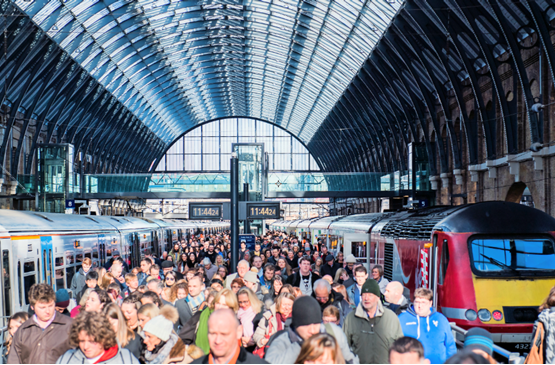 Read the peer reviews for this feature
Read the peer reviews for this feature
“Radical changes to rail fares that would guarantee customers simpler fares, and the best possible deal every time they travel, are set to be trialled by train companies.”
That was the headline from the Rail Delivery Group in February, in what it terms an “action plan”. The trials will start in May - new pricing, simpler routes, clearer choices.
This has been welcomed by everyone. The entire industry recognises that a system which offers in excess of 16 million different fares is untenable. Administration is clumsy, and passengers are put off by a level of complexity they cannot possibly be expected to understand.
But hang on. This has been tried before. And every time the industry has set out with good intentions, it has stumbled. The institutional barriers to change have been too great.
Here’s a Department for Transport news release from September 18 2013: “Rail Minister Norman Baker has announced a pilot scheme that could see all long-distance rail tickets sold on a single-leg basis, and allow passengers to mix and match each ticket type when planning a return journey. ‘I am determined to end this confusing and frustrating system… and this is proof of our determination to make that happen,’ said the Minister.”
Sound familiar? Like many initiatives before it, this one came to nothing. But this time will be different, according to the organisations involved, perhaps because it is being led by the railway and not by the Government.
At its heart lies confusion about how the railway wishes to present itself. Is it an old-style public transport system offering a regulated, published and predictable fixed price for every journey? Or is it willing to embrace the efficient demand management long favoured by airlines, to ensure that every seat is filled by varying the price?
The industry wants to make best use of its capacity. That way lies value for money for both taxpayers and passengers. But the public will not give up the public transport ethos of being able to walk onto a platform, buy a ticket for the next train to anywhere, and know exactly what it is going to cost.
The trials will test three examples of the need to modernise rail fare choices:
- East Midlands Trains will test a relaxing of regulations that were set when the direct service between London and Sheffield was infrequent, when longer routes with changes of train were normal. These journeys are no longer commonplace, as the cities are linked by two fast trains an hour.
- Virgin will test single-leg pricing on London-Glasgow and London-Edinburgh.
- CrossCountry will offer best-price through fares where customers change trains, to remove split ticketing. It will combine the cheapest fare for each leg. It is currently obliged to offer regulated through tickets for very long connecting journeys even where combinations of tickets can prove much cheaper.
- There will also be measures to make ticket vending machines more user-friendly.
“You can model these things on a computer, but at some point you actually have to try them out on passengers,” says Transport Focus Chief Executive Anthony Smith.
“It is an enormous step forward. It is something nobody has had the courage to do before. What is different this time is that the industry, with our support, has given the Government sufficient comfort to trial something which might reveal the impact of these changes in the real world.
“We will learn who the winners and losers will be, and the magnitude of those wins and losses. Some people will end up paying more, and they will complain. That’s what has worried the Government before. The winners will presumably keep quiet.”
The devil will be in the detail. On many journeys under the current system, a return fare is £1 more than the single. This is clearly a nonsense, but a nonsense which nobody has corrected since the railways were privatised.
If the return fare between two towns is £50, and the previous single £49, should the single now be £25? That way no passenger would pay more for a return, but those going one way would save £24. This would clearly be best for passengers, but could reduce revenue for the operator.
Or do you increase the return fare to £60 and price the single at £30? There would be winners and losers, but the changes could be revenue-neutral.
“It is understanding how passengers react to this in the real world that matters,” says Smith.
“Would the lower single fare actually boost revenues by encouraging more people to travel? These are tremendously important decisions, because they will form the basis of fares regulation for years to come.
“For too long, unfair fares have been the elephant in the room. The ability to chunk up a journey into separate parts, which are considerably cheaper overall, totally undermines trust in the system. Split ticketing, driven by algorithms on computers, is a disrupting force that will destroy a coherent system by leaving a legacy of inconsistencies and anomalies under which the system will eventually collapse.
“Winning the trust of passengers, by getting them the best available fares, is absolutely central to this trial.”
Neil Micklethwaite, commercial director of Stagecoach Rail, is a key player in this trial. Stagecoach owns East Midlands Trains, and is the driving partner of both the Virgin East and West Coast franchises.
“We are trying to champion the customer cause,” he says. “Twenty years ago, when regulated fares were set up, it was a decision made for honourable reasons. It was about protecting customers in a new environment.
“But the internet has overtaken that system. Back then, nobody bought their journeys online. It was much harder to compare prices and journeys. Buying patterns have overtaken the regulatory framework that was put in place.
“Our East Midlands franchise is taking part in the London to Sheffield pilot. There are lots of products on this flow. It was based upon the situation in 1995 when there was one direct train an hour, so it was often quicker to take a longer route. Now there are two trains an hour, and three years ago they were upgraded to 125mph. Getting rid of some of the products that people no longer buy will reduce confusion - you no longer need to go via Doncaster and King’s Cross, unless you particularly want to.
“We are not throwing out the old system, though. This is a controlled pilot to remove regulation to make it easier for customers to buy the right ticket. Customers who already know what they are doing will probably not change their habits. The focus is on first-time users. It may put them in control, rather than the ticketing system being in control.”
This initiative is being led by the RDG. Previous calls for change have come from outside the train operators.
“I talk to people in the Department for Transport and I don’t think there is any sense of responsibility,” says the head of one of the technology companies involved in ticketing.
“When I talk to the RDG, I see them looking to the Department for leadership. They are not getting it. Everyone is seeing only their part of the problem. Nobody actually claims the full problem.
“The system has led every train operator to want to be seen to offer the most flexible range of fares within the parameters allowed. For decades the solution to selling more tickets has been to increase the complexity of the system. Instead of maintaining a system, it has added so many more layers that it is almost irreparable.
“It is so complex that the majority of people do not get the benefit of it. You have to be skilled, and you need to have time, to find the best deals.
“Should we be asking people to pay per mile, or to pay depending on how busy the train is, or do we reduce the cost the further a passenger travels? I’m not sure anyone has thought this through in a nationwide holistic sense.
“We have to change to what the country as a whole needs, not what individual companies need. It requires a leadership that is absent.”
“The slow march to reform has begun,” counters Smith. “We’ve been around this issue since before I joined the industry in 1999. This is the biggest step I have seen. The purpose of these trials is to overcome the barriers to change. It is immensely complicated - the accretion of three decades of fares is mind-boggling, and reform is going to take years.”
So do passengers want an easily-understood and regulated system of peak, off-peak and advance single fares? Or do they accept the airline model under which the same journey can cost £30 one day and £300 the next?
“I think the core is single-leg pricing,” says Smith. “Having a Saver Return that costs 10p more than the Single Saver has to go. Yes, it has to be yield-led, but I think the Single Saver will become the regulated fare. It won’t be the end of regulation - we need the protection. Services are largely operated by monopolies, and they cannot be left to manage the market through fares alone because the most popular ones will just go through the roof.
“This is a public service, and a huge amount of taxpayer money is still involved. A lot of rail travel is not discretionary, and you cannot just let the market loose on it. That is not tenable.”
Stagecoach’s Micklethwaite adds: “We have to make it easier for customers to choose what they want. That means they could have two singles or a return. So there will still be returns. They will buy a trip - they should not need to worry whether it is peak or off-peak. It needs to be of value to them for the time of day or day of the week. The price is for the journey they want to make.”
Does that sound closer to the airline model than to the simplified structure yearned for by many?
“We need to get a balance between those people who book far in advance and those who just walk up when they need to go. We need a mechanism that covers those who travel a long way occasionally as well as those who travel on the same train every day, and who often sit in the same seat.
“We are working with the Department to test what it is customers want, and how we can remove some of the regulatory constraints on these test flows. The Minister wants real customers to try this, and see what it does to the patterns of passenger movements. May is our target date to put the trials out there. We’ve not put an end date on them - we need to get a proper set of data, so they will run for a while.”
“We have the worst of both worlds,” says the managing director of one of the large rail consultancies.
“With airlines you see a multitude of fares sold by many different operators, and nobody is surprised by them. They understand prices change from day to day according to demand.
“We are getting closer to that on the railway because the demand forecasting systems are getting better. Yet there is still an inbuilt public assumption that there is a fixed fee for a fixed journey. This is rooted in the concept of public transport - there has to be a published tariff for everything with a regulated fare. It is the antithesis of the airline process.
“It happened because we computerised a system that has existed since before everyone had computers. Unlike the airlines, we did not tear up the system and start again.
“The actual physical relationship between a ticket and the price is something the airlines moved away from. There is no exchange of a coupon for a seat, whereas our vending machines are trying to marry new technology with an old system. Until we tear it up there is going to be tension.
“You could wipe away the ticket and just go to smartphone technology, but not everyone has one. But in time it is inevitable, and it takes us further away from what the public actually want: a fixed price ticket for a journey.”
“Tech can reduce some of the complexity for users,” counters the head of one of the leading tech firms. “It will get easier for the public who access their tickets online. But people who do not engage with the tech to get the better fare should not be penalised - we have to serve all customers.
“Tech can smooth the peak. It can incentivise shoulder-peak services. And there is a lot it can do around season tickets to manage the complexities of the travelling week. The current set-up does not match demand.
“For people who commute two or three days a week we have no incentive. We don’t offer a season ticket that can be used over a period but not every day - like a book of 20 journeys which could be used over three months.
“Working patterns are changing, and commuters do not all work Monday to Friday in the same office, 47 weeks of the year. There is no product that serves their need because the regulatory architecture is rigid and doesn’t allow it.
“What we need is more flexibility, not less. Are we actually trying to solve yesterday’s problems, rather than tomorrow’s?”
If these problems are to be tackled, how can the franchising system accommodate it? Companies bid for contracts based on their assessments of revenue and risk. None would bid against the unquantifiable risk of reforming the way the revenue is raised. If the flexible season tickets advocated by the technology company were introduced, the impact on income would be unpredictable.
“The prediction of revenue is the single biggest number on a bidder’s spreadsheet,” explains a former train operating company managing director.
“East Coast has failed several times now. Each time, it happened because the companies overestimated what the revenue could be. Each time, they over-promised because they got the headline number wrong.
“So bidders will want to see whether they can abstract revenue in a more sophisticated way - making the fares system more complex, rather than less. They will want to spread the peaks into the shoulders because that can increase income.
“If you had (say) only three types of single-leg tickets, you would unquestionably reduce the scope for demand management, and you would reduce income. This cannot be in the wider public interest, which is best served by a well-financed railway.”
Transport Focus’s Smith suggests bidders for future franchises would have to submit their plans based on existing revenue streams with provision for in-franchise adjustments to account for what actually happens when fares are reformed. In that sense, the franchise would become more like the management contract currently held by Govia Thameslink Railway.
“I can’t see anybody bidding on the basis of trying to guess the magnitude of change this will bring,” he says.
“There will have to be quite considerable adjustment. But we cannot keep on doing nothing and ducking the issue just because it is difficult. The Department will not be able to see the degree of exposure to which it will open itself. And on behalf of taxpayers, I don’t want to see that happen either. But doing nothing about our fares regime is not an option.
“It’s like a game of 3D chess. The train companies will want to be indemnified against any loss. And the Department will want to ensure the operators do not reap massive rewards from any new anomalies that emerge. We are all learning on the job, but I think politicians have now been sufficiently convinced that there is a suppressed demand for travel that comes from replacing paper tickets. The quality of information we can get from the new environment is so much better.”
The tech company boss contends: “If you have a year’s planning, there is no technical reason why you cannot transfer to a new fares process mid-franchise. A new franchise could be awarded on a series of financial and commercial assumptions, with an agreement that they can be varied in the light of the changes.
“Ticketing technology will change beyond recognition in the next 15 years. Travel will become ticketless. Your smartphone will be picked up by beacons at the station, and then on the train. You will effectively be tracked on the train until you get off, including any changes of train. And in effect, you will be billed for your travel after the journey has finished, based on the best possible fare for that journey.
“So you have post-travel accounting. Which means you clearly cannot benefit from advance fares - an increasing number of passengers will not buy anything until they travel. This is what is already happening in London.
“But this is the rail industry! Change is slow because it is run around engineers, not around customers. Until you have a Government that is determined to solve it, it will not be solved.”
Smith concludes: “I don’t want to turn up on the news again in three years’ time saying the fares system is broke, complex and chaotic. I want to say we’ve given change a chance. Saying the same thing year after year is boring!
“People are chomping at the bit to get on with new and cleverer forms of ticketing. But if they are to do that, we have to sort out the institutional changes first.”

Train companies are working hard to make train journeys in Britain better from start to finish. That includes making it easy to get the right ticket for your journey at the best possible price wherever and however you buy it - from a ticket machine, at a ticket office, or online.
Steps unveiled by train companies could lead to the most radical overhaul of the complex fares system for more than 30 years, paving the way for significant changes that will help customers find clearer fares they know they can trust.
Train companies and the Rail Delivery Group are spearheading these targeted trials, collaborating with Government. We see this as the beginning of a journey towards wider and far-reaching reform of the fares system, and are very pleased that the DfT and others want to work with us to explore how the complicated, outdated fares set-up - created over decades - can be simplified so that we are able to give customers good deals that are easy to understand.
Over the past 20 years TOCs have introduced a range of customer-friendly innovations, deals and good value fares that have helped to attract record numbers of passengers. Yet decades-old government rules covering rail fares prevent them from being more flexible in offering tickets that customers want. Those regulations were designed to protect customers’ interests, but now just baffle many.
Our trials are a product of wide-ranging discussions which culminated in an action plan agreed last December between train companies, the Rail Minister and consumer groups. The plan sets out a range of measures designed to make it easier for passengers to choose the best value fare for their journey.
The trials are an important first step, and will be designed to establish what changes to regulations and processes are needed. We will test new pricing, simpler routes to give customers clearer choices, and the removal of unnecessary and unwanted fares from the system - fares created long before the internet and online booking which nobody buys, but which TOCs are required by the regulations to offer. We want to work with the Government to discuss how the system can be updated, so that consumer protection underpins giving people fares they really need.
As for ‘winner and losers’, the trials will test the impact of the proposed changes on ongoing investment into the railway. The current balance of revenue and costs allows around 97p in every £1 from fares to go back into running and improving the railway. Our trials, with government support, will test the proposals thoroughly to ensure that current investment levels are protected. If the initial impact on taxpayers is negative, then the danger is that this would be bad for passengers since it could undermine future investment for improvements. So the trials may result in some people getting cheaper fares which have to be balanced by a few paying a bit more as we iron out the wrinkles in the old system.
These bold steps, combined with improvements to services and information already being made, will help to make train travel better for the millions of people who use the railway every day.

There is a range of differing views surrounding fares simplification and the difficulties of achieving it. Of course, different stakeholders will highlight their particular bugbear. Some will have their preferred solution, such as single-leg pricing; others define it around a specific manifestation of a complicated fares structure such as split ticketing, which they would in fact like to get rid of! What is not clear is the extent to which there is any agreement on what fares simplification actually means to different stakeholders.
To help us achieve a simpler fares structure, we must firstly agree ‘the problem’ that we are trying to fix, then de-scope the parts of the current fares structure that are likely to remain. Many would agree that removing fares that are no longer used is a good idea. But in a system that cannot provide infinite capacity, Advance fares that best match demand with available capacity are a necessity.
It seems to me that there are at least four dimensions to fares simplification:
Simplifying passengers’ choice - decreasing the number of ticket options, perhaps after aggregating the range of Advance fares typically made available by revenue management systems as one ticket type, would probably simplify the choice process… but may result in higher fares.
Presentation - a related issue to the above is how the alternative fares, and their associated terms and conditions (for example - time/date of travel), are presented online and on ticket vending machines.
Fairness - some consider it unfair for the Single fare to not be priced at half the Return fare, because it is not logical and because it limits passengers’ ability to mix and match ticket types for their return journeys. Related to this is a passenger’s right to know the cheapest fare for their journey, without needing to check split ticketing websites.
Market segmentation - it is important to recognise that different market segments have different needs, and different approaches will be needed to address the needs of commuters and long-distance passengers.
We need to agree what we want to achieve, and be more informed of passengers’ needs. For example, recent research established that passengers prefer a more complex fares structure to a simpler one, if the complex structure offers them cheaper fares. This suggests that a very simple distance-based fares structure is not the answer.
Once we can agree on the ‘end game’, it will be far easier to suggest solutions. To this end, we can then identify the technological, commercial, procurement and regulatory constraints that need to be resolved. We can then work towards a transition plan that would address how we get to our desired fares structure through introducing new products and phasing out old ones. This plan will consider how the franchising system can accommodate such changes and how we mitigate any negative impacts.
The trials starting in May are clearly important for increasing the industry’s understanding of this incredibly thorny issue.

Alongside the timetable, the tickets that passengers buy represent the core ‘product’ that the railways offer. There is no doubt that great things have been done to speed up journeys and improve the service offered on many routes - making train travel so much more attractive to so many more people.
However, it is arguable that even bigger factors in driving the record growth in the numbers of passengers using inter-city trains have been the changes made to the types of tickets that are on sale, and the ways that passengers can buy these tickets.
Just look where we have come from. Back in the day, you bought your ticket over a counter on the day you travelled. What you got was a piece of paper. Your ticket generally came in two sizes - big one for inter-city and a smaller one for suburban. Fares also came in two sizes - big for peak, smaller for off-peak. Pretty much a colour version of the monochrome Victorian system.
Today, we have tickets and fares seemingly tailor-made for each individual passenger. And you can buy by phone, on the internet, a ticket vending machine, an App, or even from a person! Your ticket might be ‘old school’ orange, a barcode on your smartphone, a chip in your bankcard, a wireless signal from your smartphone, or you might have printed it yourself.
With all this choice, the average fare actually paid by passengers has fallen and the number of inter-city passengers has rocketed, as we see the synergy between the Advance Purchase inter-city rail ticket and the burgeoning budget hotel industry.
So the rail industry is right to work hard to develop new tickets, fares and ways of buying that work for passengers. But with all this innovation, variety and choice has come complexity. This is not in itself a new challenge - I remember British Rail’s ‘Blue Days’ and ‘White Days’ - but today’s complexity has taken things to another level. So as well as innovating to deliver more of what passengers want, the rail industry needs to work just as hard to remove the confusion and concern that this complexity can cause passengers.
As Paul highlights, this is going to be hard work. With fares and tickets, the rail industry is great at adding new things on top of what went before. Sometimes ‘backwards compatibility’ is a good thing, but here it seems to have created a whole swathe of inconsistencies and anomalies which can probably only be fixed by a top to bottom restructuring. However, any such restructuring will need to be done with a firm eye on the passenger, to ensure that the changes are fair and their consequences understood by passengers and funders.
The rail industry will need to work in partnership here, as so much of the inherited structure is baked into the way that train operators work with Government, but a way needs to be found to make it all work for all types of train services and the wide range of passenger needs. And making things work is something the rail industry is good at - we have the ideas and we know the issues, we understand our passengers’ needs, and we can act once there is clarity as to where we are heading.
The pilots are therefore hugely welcome, and cover the wide range of challenges that we will all face. And it is great to see new players involved in these innovations - it is so hard to get up to speed in this game, but new ideas are needed. Now would be a good time to be bold and unlock the great opportunities that are hidden here, and not let this be another false start.
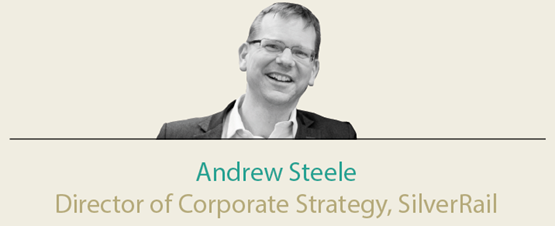
As an independent supplier in the international rail market, we at SilverRail process over one billion rail searches and 25 million transactions every year. We supply global travel brands and rail carriers directly, giving us a unique view of the industry. We have identified three policies that could simultaneously improve TOC margins and rail’s customer experience - achievable with minor adjustments to the current regulatory framework, and without incurring significant cost or risk to the industry.
Firstly, increased use of dynamic pricing. Despite some services having dynamic prices on the day of travel, it is hard for customers to identify which train has the cheapest bookable seat. Improved technology that instantly displays the dynamic price of every journey in a day and the best price for every day for the next year, combined with wider use of dynamic pricing on all services, would mean that customers could instantly see which services would be the cheapest and adjust their travel patterns accordingly, helping to increase capacity by smoothing the peak demand.
Secondly, the Rail Delivery Group should enable universal retrospective payment authority with a best price promise. Currently customers face a lottery when they buy tickets in advance, taking a gamble that they are paying the best price. This gamble could be the low-paid zero hours contract worker, who has to gamble on buying a weekly season ticket which offers the best fare if they work five days that week, but not if they only work three. Or the traveller who is uncertain if they will travel back in the peak, off-peak or super off-peak.
Perversely, many season ticket holders deliberately take the peak trains because they have already paid for the peak services and see no financial benefit from taking a quieter off-peak service, thereby accentuating peak demand. By enabling universal retrospective payment authority across the rail industry, customers could travel on a walk-on product, knowing that at the end of the day, week or month they will have paid the best price for the journeys they made, including automatic compensation when the journey is delayed (‘delay, don’t pay’).
Thirdly, realising that rail travel is just one mode, and looking at the wider mobility ecosystem, we advocate that the Government should mandate that the third-party retail model offered by the rail industry should be widened to apply to all modes in a fair and transparent manner. If third-party retailers could distribute bus, coach and taxi travel, it would create a true market place for mobility services that could lead to an increased modal shift away from the reliance on the car, to the benefit of the whole society.
Together, these three strategies would contribute towards the railway being able to deliver on a vision of excellence in customer experience - empowering the traveller to take control of their journey and the train operators to harness the resurgence of rail and the significant business opportunity it presents.

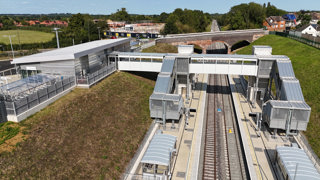
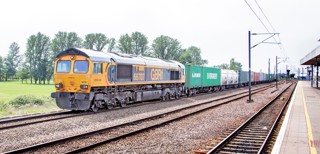

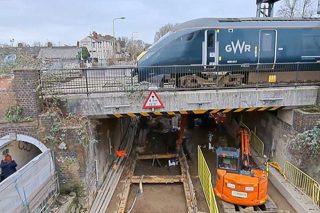
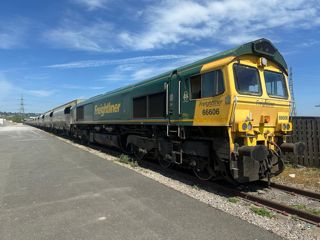




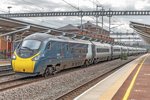







Login to comment
Comments
No comments have been made yet.